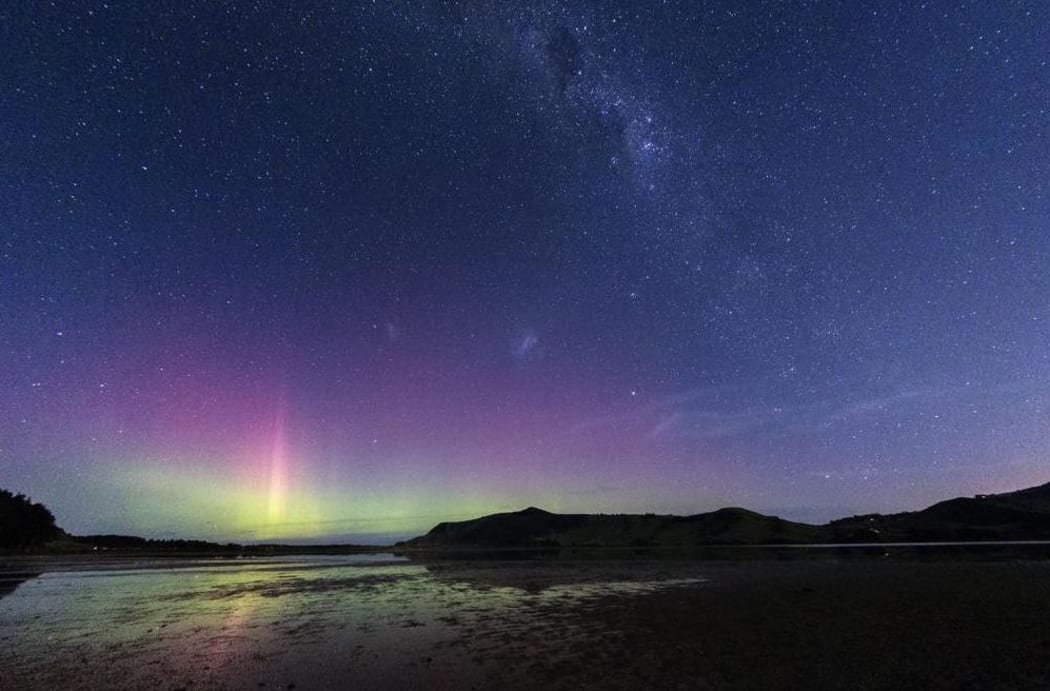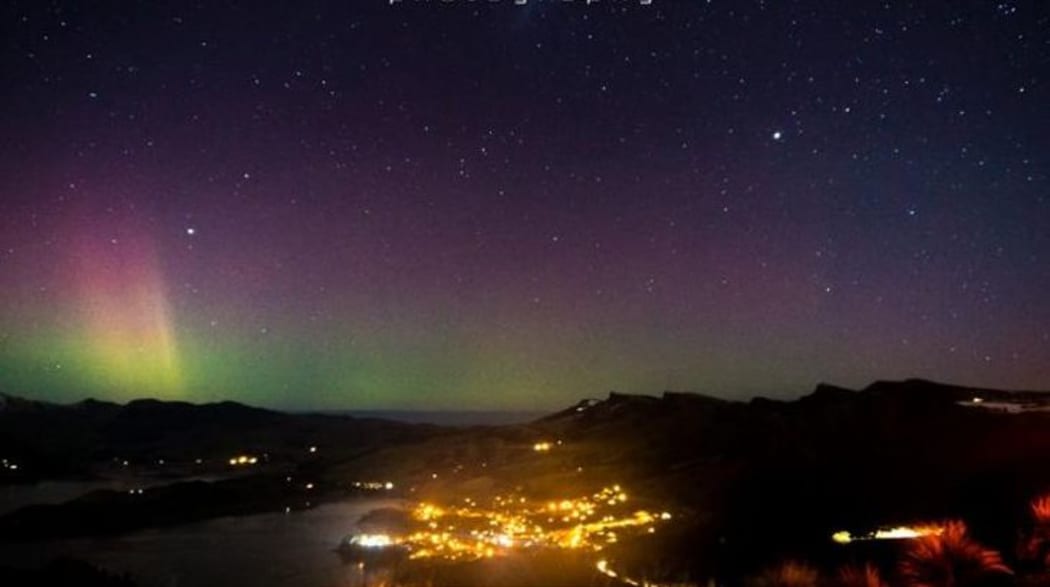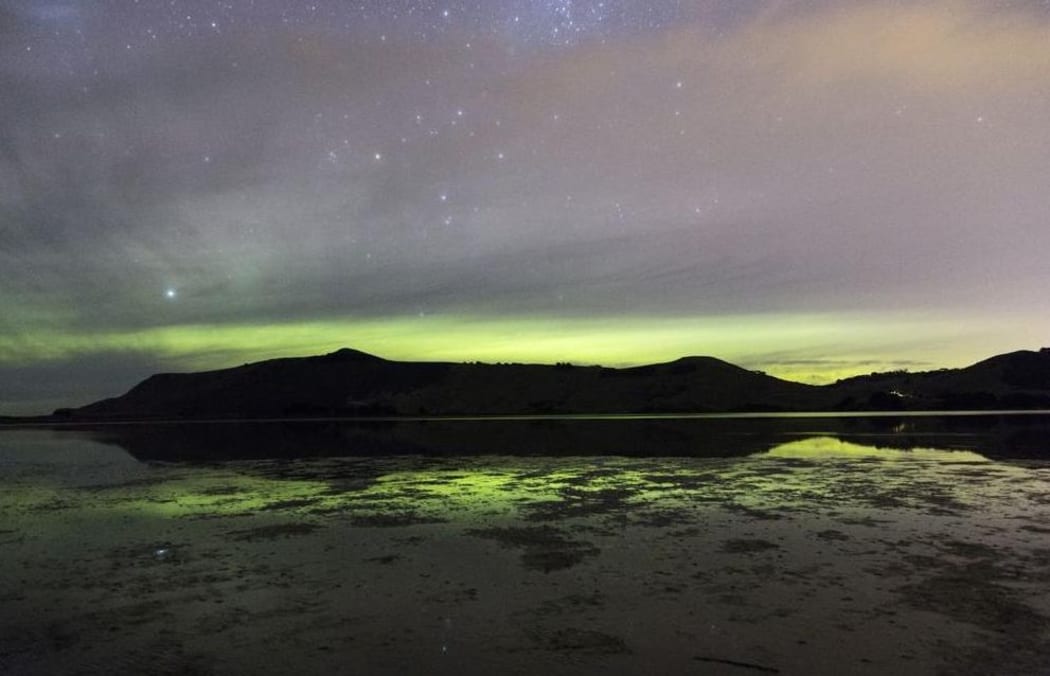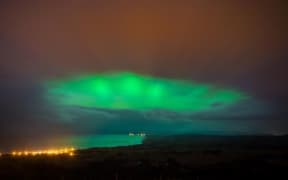If they were lucky and in the right place, Aurora Australis followers had a treat overnight.

The Aurora over Hoopers Inlet. Photo: Ian Griffin
The phenomenon fills the sky with bright colours from pink and purple to yellow and green.
The storm is normally only seen in the South Island, but the solar storm is so big it has been spotted off the North Island's east coast.
Director of Otago Museum, Ian Griffin, who is also an Astronomer, said he was up all night to get a glimpse of the show.

The Aurora as taken from the top of the Port Hills in Christchurch. Photo: Supplied / Dan Eggleton Travel Photography
"It was a very, very nice show. At times it was spectacular with beams and lovely colours.
"Last night, I guess it was about 1 o'clock in the morning, I was in the middle place called Hooper's inlet on the Otago Peninsula and the mountains were silhouetted by a fantastic green background."
Dr Griffin said a lot of the Aurora be seen with the naked eye and a lot of amazing photographs had been taken across the country.

The Aurora over Wellington, Taken at Moa Point last night between 9.15pm and 9.18pm. Photo: Supplied/ Sally Eyre
He said the storm started about yesterday morning and is still going and Aurora followers will probably be able to spot the lights again tonight.
Aurora Australis, also known as the Southern Lights, is caused by eruptions on the surface of the sun.

Sandymount on Otago Peninsula silhouetted by the Aurora. Photo: Ian Griffin
As explained by the Australian Bureau of Meteorology - the colours appear when electrically charged electrons and protons accelerate down the Earth's magnetic field lines and collide with neutral atoms in the upper atmosphere - usually about 100 kilometres above the Earth.
"These collisions cause the neutral atoms to fluoresce, emitting light at many different wavelengths," it said.
"The most common aurora colours are red and green, caused by the fluorescence of oxygen atoms, while nitrogen atoms can throw bluish-purple lights into the mix."
The aurora showing well last night as well as the lights of NZ under the cold clear skies ^JL pic.twitter.com/uj70fW2etP
— MetService (@MetService) June 23, 2015


